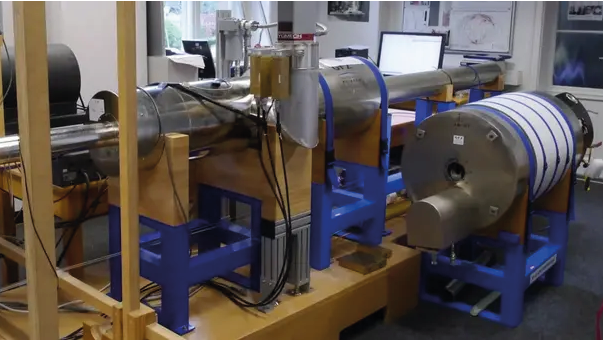Magnetische Archive des Erdsystems
Kontakt:
Web:
Infrastrukturzugehörigkeit:
Das Labor für Erdmagnetismus in Raum und Zeit analysiert magnetische Eigenschaften von Sedimenten und Gesteinen, um zeitliche Veränderungen des Erdmagnetfelds sowie von Klima- und Umweltbedingungen zu rekonstruieren. Dabei werden Parameter wie Magnetisierung, Koerzitivität, Curie-Temperatur, Korngröße und Mineralkonzentration untersucht, um die Bildung und Umwandlung magnetischer Minerale detailliert zu charakterisieren. Die daraus gewonnenen Daten sind essenziell für die zeitliche Einordnung geologischer Archive (z. B. mittels Magnetostratigraphie) und die Interpretation paläoklimatischer Signale. Sie leisten damit einen grundlegenden Beitrag zur Paläo- und Gesteinsmagnetik und zur übergreifenden Analyse erdgeschichtlicher Prozesse.
Darüber hinaus tragen die im Labor erhobenen paläomagnetischen Daten maßgeblich zur Erforschung der Dynamik des Erdmagnetfelds bei. Sie ermöglichen Rückschlüsse auf dessen frühere Veränderungen und die zugrunde liegenden Prozesse im Erdinneren und bilden damit eine wichtige Datengrundlage für feldbezogene Modellierungsansätze innerhalb der Sektion Geomagnetismus.
Ausgewählte Infrastrukturen
Fachspezifische Schlagworte
- Paleogeoscience
- Demagnetization
- Remanent Magnetization
- Magnetic Susceptibility
- Mass-Specific Magnetic Susceptibility
- Coercivity
- Curie Temperature Analysis
- Magnetic Hysteresis Analysis
- Magnetization
- Magnetic Extraction
- Geomagnetismus und Paläomagnetismus
- Geophysik
Kategorien
Instrumentierung
Laboratory instrumentation
Instrumente
-
GFZ Split-Core Logger
-
Demagnetizer
-
Magnetic Susceptibility Bridge
-
Magnetic Susceptibility Sensor
-
Magnetizer
-
Variable Field Translation Balance
The variable field translation balance (VFTB) is an instrument for measuring isothermal magnetizations in variable fields (e.g., hysteresis loops) as well as the temperature dependence of the associated magnetic parameters. It is specifically designed to measure the weak magnetizations commonly encountered in rock magnetism. (Source: https://doi.org/10.1007/978-1-4020-4423-6_312)
-
Magnetometer
Magnetometers measure the Earth's magnetic field intensity. (Source: Global Change Master Directory (GCMD). 2023. GCMD Keywords, Version 16.3. Greenbelt, MD: Earth Science Data and Information System, Earth Science Projects pision, Goddard Space Flight Center (GSFC) National Aeronautics and Space Administration (NASA). URL (GCMD Keyword Forum Page): https://forum.earthdata.nasa.gov/app.php/tag/GCMD+Keywords)
-
Spectrophotometer
Spectrophotometers are photometers that measure the intensity of radiation as a function of frequency (or wavelength) of the radiation; radiation enters the meter through a slit and is dispersed by means of a prism. (Source: Global Change Master Directory (GCMD). 2023. GCMD Keywords, Version 16.3. Greenbelt, MD: Earth Science Data and Information System, Earth Science Projects pision, Goddard Space Flight Center (GSFC) National Aeronautics and Space Administration (NASA). URL (GCMD Keyword Forum Page): https://forum.earthdata.nasa.gov/app.php/tag/GCMD+Keywords)
Links
Datenpublikation
Schlüsselpublikation
- Nowaczyk, N.R. (2021) Redeposition experiments with natural sediments from the SE Black Sea in magnetic fields between about 2 and 114 µT. Geophysical Journal International, 224, 1, 271–289.
- Nowaczyk, N.R., et al. (2012) Dynamics of the Laschamp geomagnetic excursion from Black Sea sediments. Earth and Planetary Science Letters, 351-352, 54-69.
- Nowaczyk, N.R., et al. (2021) Records of the Laschamps geomagnetic polarity excursion from Black Sea sediments: magnetite versus greigite, discrete sample versus U-channel data. Geophysical Journal International, 224, 2, 1079–1095.
